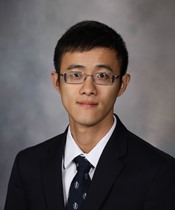Program Information
Metal Artifact Reduction and Dose Efficiency Improvement On Photon Counting CT Using An Additional Tin Filter
W Zhou*, D Abdurakhimova , K Rajendran , C McCollough , S Leng , Radiology, Mayo Clinic, Rochester, MN
Presentations
WE-DE-605-11 (Wednesday, August 2, 2017) 10:15 AM - 12:15 PM Room: 605
Purpose: To investigate the impact of additional spectral filtration on metal artifacts, image noise and radiation dose on a photon counting computed tomography (PCCT) and to determine the optimal energy threshold configuration.
Methods: A whole-body research PCCT scanner (CounT, Siemens Healthcare) with a movable 0.4-mm Tin filter was used in this study. X-ray spectra with and without the Tin filter were simulated with the photon counting detector response incorporated. Effective energy and percentage of photons for high energy threshold (TH) were calculated. A cannulated screw was placed in a 35 cm water phantom and scanned on the PCCT, with and without the Tin filter. Tube potential and low energy threshold (TL) were fixed at 140 kV and 25 keV, while TH was 70, 75, and 80 keV to determine the optimal threshold. CTDIvol was kept the same (12.05 mGy) for all phantom scans. The mean CT number difference between water regions with and without metal contamination was measured to quantify the artifact severity. Image noise was also measured for each scanning condition.
Results: Simulated spectra showed the effective energy and percentage of photons in the TH images increased with additional Tin filtration. Phantom results showed the median CT number differences of both threshold images decreased from 89.3 and 29.8 HU (without Tin) to 42.9 and 20.9 HU (with Tin). For different TH values with Tin filtration, median CT number differences decreased (70 keV: 30.8 HU, 75 keV: 20.9 HU, 80 keV: 20.2 HU) while noise levels increased (70 keV: 37.0 HU, 75 keV: 37.1 HU, 80 keV: 44.2 HU).
Conclusion: The additional Tin filtration on the PCCT system substantially reduced metal artifacts and increased dose efficiency. Our results suggested TH = 75 keV was the optimal threshold to balance between metal artifacts reduction and image noise.
Funding Support, Disclosures, and Conflict of Interest: The project described was supported by Grant R01 EB16966 from the National Institute of Health, in collaboration with Siemens Healthcare.
Contact Email:
